In most cases if your agent can arrange access we can provide your report on the same day as request, worst case within 24 hours.
An invoice will be forwarded on the same day as booking, payment is via funds transfer.
The report is approximately 50 pages and includes images of any defects discovered and covers over and above the Australian Standards.
No we will arrange with your agent for access.
This is fine all we ask is that you attend towards the end of the inspection, we don’t want any distractions from providing a comprehensive and accurate report and any distractions can be an interference.
Yes we are insured with professional indemnity and public liability insurance.
A defect report, otherwise known as a building completion report or warranty report, is a written, detailed description of all defects and illegal practices within a new property. Defect reports are completed by qualified building inspectorssuch as OCPS building inspectors, and are generally performed after completion of the building and before any occupation of the house. This is to ensure that all Australian Building Code guidelines have been met. Defect reports are also used to provide proof of standards to insurance companies before any insurance policies are issued, as well as to provide owner builders with “Owner Builder Warranty Insurance” when selling. Once all of the defects have been reported, the property may be sold, or else the defects may be remedied and a second inspection and report can be issued.
A building inspector is a qualified individual with certification and experience in property inspection, which may include residential, commercial and heritage buildings. Before hiring a property inspector, ensure that they have the relevant expertise and qualifications to suit your particular property. A home inspection from OCPS involves a certified inspector providing a thorough and comprehensive home analysis, both inside and outside. They survey for any potential problems and areas of concern, such as those noted above, using state-of-the-art equipment, and years of experience in home inspections. OCPS Building Inspections performs visual, non-intrusive inspections, safeguarding your home against possible damage from intrusive surveys. A comprehensive defect report is then written, detailing any defects within the building or property.
Whether you’re selling or buying your property, making sure you get a qualified home inspection is critical to any real estate transaction. A licensed home inspector can save you both time and money, and is essential when thinking of purchasing a home. Any information you can get about you future home, especially any problems, is of the utmost importance. An inspection can reveal any problems or concerns a property has, or may have in the future, including any potentially dangerous hazards; moulds, termites, structural weaknesses and carbon monoxide leaks. Early detection is very important in such situations, and treatments are less costly when implemented earlier. A report from a trained inspector is also a valuable tool in negotiations; as a buyer, it’s a great chance to request further home repairs, a reduction in price, or even to determine if a property is worth the repair investment. Certain insurance companies may not insure a home unless certain safety guidelines are met, and that may include having a qualified home inspection; check with your insurance provider for details.
A common problem for Melbourne homes is that of infestations of insects and pests; specifically termites. Termites, or white ants, can be very destructive to Australian homes, especially along sandy soils, and beachside communities. If undetected and untreated, termites can eat away at the inside of a home, costing upwards of thousands of dollars. Rodents are another common pest problem for Melbourne homes, particularly during the winter months. The Melbourne area is especially vulnerable to subsidence issues, due to the clay content in the soil, which is very dependent on the seasonal moisture content of the soil. Changes such as droughts can create weaknesses in foundations. Like many structural complications, early detection is vital to combating subsidence issues. Dampness, water leaks, and mould and fungal issues are also frequent problems, needing urgent attention when encountered.


